
Ernest Dumonthier, “Les Bronzes du Mobilier National, Pendules et Cartels”, 1911, pl. 39, illustrating an almost identical clock, signed on the dial Lefevre à Paris and case with a central frieze on the base composed of a swan on a tazza in place of hearts, which the author notes as being from a composition attributed to André-Antoine Ravrio and that in 1809 it was in the Emperor Napoleon’s cabinet de travail at the Palais de L’Elysée.

Hans Ottomeyer and Peter Pröschel, “Vergoldete Bronzen”, 1986, p. 354, pl. 5.9.1, illustrating an identical clock in the Musée National du Château de Malmaison, noted as by André-Antoine Ravrio, 1809.

Tardy, “Les Plus Belles Pendules Françaises”, 1994, p. 276, illustrating the same clock as illustrated in Dumonthier, which is noted as being from a composition by Ravrio of which there are examples in the Palais de L’Elysée and the Ministère de la Guerre.

Jean-Dominique Augarde, "Les Ouvriers du Temps", 1996, p. 144, pl. 109, illustrating the example in the Musée National du Château de Malmaison, where the author states that the case was by François Timothée Matelin.
Basile-Charles Le Roy
Further images
-
(View a larger image of thumbnail 1
)
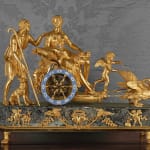
-
(View a larger image of thumbnail 2
)
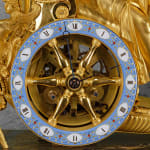
-
(View a larger image of thumbnail 3
)
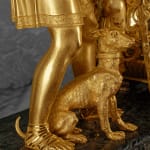
-
(View a larger image of thumbnail 4
)

-
(View a larger image of thumbnail 5
)
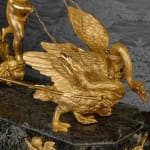
-
(View a larger image of thumbnail 6
)
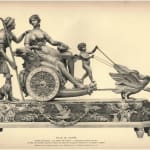
-
(View a larger image of thumbnail 7
)
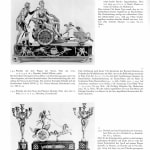
-
(View a larger image of thumbnail 8
)
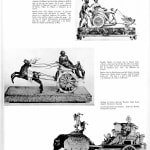
-
(View a larger image of thumbnail 9
)
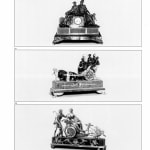
Literature
Ernest Dumonthier, “Les Bronzes du Mobilier National, Pendules et Cartels”, 1911, pl. 39, illustrating an almost identical clock, signed on the dial Lefevre à Paris and case with a central frieze on the base composed of a swan on a tazza in place of hearts, which the author notes as being from a composition attributed to André-Antoine Ravrio and that in 1809 it was in the Emperor Napoleon’s cabinet de travail at the Palais de L’Elysée.
Hans Ottomeyer and Peter Pröschel, “Vergoldete Bronzen”, 1986, p. 354, pl. 5.9.1, illustrating an identical clock in the Musée National du Château de Malmaison, noted as by André-Antoine Ravrio, 1809.
Tardy, “Les Plus Belles Pendules Françaises”, 1994, p. 276, illustrating the same clock as illustrated in Dumonthier, which is noted as being from a composition by Ravrio of which there are examples in the Palais de L’Elysée and the Ministère de la Guerre.
Jean-Dominique Augarde, "Les Ouvriers du Temps", 1996, p. 144, pl. 109, illustrating the example in the Musée National du Château de Malmaison, where the author states that the case was by François Timothée Matelin.
Elke Niehüser, “Die Französische Bronzeuhr”, 1997, p. 243, pl. 929, illustrating an almost identical clock.
An important Empire gilt bronze and grey veined black marble chariot clock of eight day duration by Basile-Charles Le Roy, signed on the chapter ring Le Roy à Paris, housed in a magnificent case attributed to André-Antoine Ravrio and featuring a very beautiful polychrome dial ring attributed to Henri-François Dubuisson, the pale blue enamel chapter ring with black Roman numerals within a white spandrel, each headed by a gilt diamond and interspersed by red jewels between outward facing gilt foliate scrolls, the dial ring acting as the chariot’s wheel with a skeletonised centre to reveal the movement behind six wheel spokes, with blued steel Breguet style hands for the hours and minutes. The movement with anchor escapement, silk thread suspension, striking on the hour and half hour, with outside count wheel. The case representing ‘Le Char de Venus accompagné du bel Adonis’ portraying Venus seated in the chariot looking over her shoulder toward Adonis, dressed as a shepherd who holds a crook in his right hand and rests his other on Venus’s shoulder, at his feet sits a dog, symbol of fidelity. Venus with a dove, symbol of love, upon her left knee, leaning against a tasselled cushion in her chariot with a winged female to the back and female mask head to the prow and driven by the standing figure of Cupid who holds reins attached to a pair of swans, attributes of Venus, who pull the chariot along. The whole on a shaped rectangular marble plinth mounted at centre with a pair of crowned arrow-pierced hearts above a foliate swag held by a pair of doves, the central mount flanked by scenes of Cupid grinding his arrows on a whetstone and shaping them on an anvil, on eight lion paw feet
Paris, date circa 1807-10
Height 45 cm, width 64 cm, depth 19 cm.
This important clock is distinguished by the quality of its case, which is attributed to André-Antoine Ravrio (1759-1814), its beautiful polychrome dial attributed to Henri-François Dubuisson (b. 1731 d. after 1823) as well as the maker of the movement, namely Basile (also known as Bazile)-Charles Le Roy (1765-1839). Not only were all these men leaders in their respective fields but we also know that clocks of the same model were made for very important clients. Among them identical examples have been housed in the Musée National du Château de Malmaison and the Ministère de la Guerre as well as the Tuileries, 1807 and the Palais de L’Elysée, 1809. The identical clock in the Musée National du Château de Malmaison is presumed to have been among the furnishings belonging to Napoleon’s mother Madame Mère at the hôtel de Brienne. In addition, Maréchal Michel Ney, Prince of Moskowa (1769-1815), who Napoleon described as ‘the bravest of the brave’, also owned a clock of the same model, which he displayed in the salon of his private apartments at his hôtel. Few works of art can boast such acclaimed comparisons.
Attributions as to the maker of the case have varied over the years so while Augarde, op. cit. attributes it to the fondeur François Timothée Matelin (1759-1815), Dumonthier op. cit. and Tardy op. cit. as well as Ottomeyer and Peter Pröschel op. cit, all attribute it to Ravrio. As one of the greatest French bronziers of pre and post-Revolutionary France, André-Antoine Ravrio was a highly successful, well-respected businessman and an exceptionally gifted artist. He came from a fascinating background. His maternal grandfather was the ébéniste François Vandercruse whose son, (Ravrio’s uncle), was the renowned ébéniste Roger Vandercruse, known as Lacroix, while Ravrio’s mother was sister-in-law to the royal ébéniste, Jean-Henri Riesener. After a good education, Ravrio joined the Académie and then trained as a fondeur under his father, André Ravrio. Having been recommended by the esteemed bronzier Pierre-Philippe Thomire (1751-1843) to the comte d’Artois in 1774, three years later in 1777 Ravrio was received as a maître-fondeur, after which he joined J-B Disnematin-Dorat, a Parisian doreur-argenteur. In 1790 Ravrio married Disnematin’s daughter; his father-in-law sold him his warehouse stock, which Ravrio rapidly expanded.
Ravrio’s success during Louis XVI’s reign was surpassed under Napoleon. In 1806 Ravrio supplied a number of bronze furnishings for the Empress Joséphine at the Tuileries and in 1810 was appointed the Emperor’s chief bronzier. Commissions followed for many of the Imperial residences at the Tuileries, Fontainebleau, Saint-Cloud, Versailles, Compiègne and Rambouillet as well as for the Quirinal in Rome, Monte-Cavallo and for Stupinigi near Turin. He also supplied Louis Napoleon Bonaparte, King of Holland as well as many other notable figures. In order to meet demand, he employed over a hundred craftsmen. Sadly, none of his three children survived, though his adopted son, Louis-Stanislas Lenoir-Ravrio (1783-1846) became his partner in 1811 and continued the business after his death. Ravrio’s bronzes can be seen among the world’s finest collections including those mentioned above as well as the Stedelijk Museum Lakenhal, the Upper Belvedere Vienna and the Musée Massena at Nice.
His celebrated oeuvre included a variety of luxury objects, from candelabra, chandeliers, vases, figurines and clock cases. A number of these were chariot clocks, which became very popular during the Empire period as one of a number of models inspired by Antiquity. Among those by Ravrio was one that was delivered in 1807 for the ‘boudoir d’argent’ of Empress Josephine at the Elysée Palace portraying Cupid upon a chariot pulled by a pair of spaniels inscribed on the drapery “L’Amour conduit par la Fidélité” (illustrated Ottomeyer and Pröschel, op. cit., p. 353, pl. 5.8.7) as well as another of 1806-8 with a young Cupid and chariot drawn by a single standing spaniel, made for the boudoir of Princess Caroline Murat at the Elysée Palace (illustrated ibid. p. 692, pl. 18a).
The subject of the clock is Love. In the chariot sits the figure of Venus, mythological goddess of love and because of their beauty swans, which pull the chariot, were represented in art as one of Venus’s attributes. We also find other allusions to love in the guise of the young Cupid, who sharpens his arrows on a whetstone and also shapes them on his anvil. Added to this are love birds or pairs of doves, again commonly associated with Venus as well as crossed arrows encircled by floral wreaths composed of roses, flowers commonly associated with love. Behind Venus stands Adonis, who according to mythology was as beautiful as Venus herself and though his mother Myrrha had once offended Venus, the latter could not fail to fall in love with him. Here he is dressed as a shepherd and is accompanied by a dog, symbol of fidelity. The dog itself is a windhound or early type of greyhound, inspired by representations of this type of dog in Antiquity, ranging from ancient ceramics, coins, wall paintings and sculpture. As such it compares to one shown on a mural at Thebes or carved in marble (Acropolis Museum, Athens) or merely its head formed as a rhyton, an ancient drinking vessel (The Archaeological Museum, Milan). The ancient Greeks, Romans and Egyptians clearly enjoyed portraying these hunting dogs in the arts and it was those representations that inspired Ravrio’s own classical dog. At the same time, the dog also alludes to Adonis’s love of hunting. Venus, who often followed him when he hunted, advised him against the dangerous animals but he was nevertheless eventually killed by a wild boar. Myth then tells how Venus wept over him and from the mixture of his blood and nectar sprung a new flower, the anemone.
As a mark of the clock’s importance, the movement was made by the royal clockmaker Basile-Charles Le Roy, who founded the esteemed horological house of Le Roy in Paris at 60 Galerie de Pierre, Palais-Royal shortly after 1785 when the duc d’Orléans (Philippe Egalité) opened up the Palais-Royal gardens to the public and the buildings to the trade. This enabled Le Roy and a number of other clockmakers to set up shop in the arcade galleries. Le Roy was born in Paris and as the son of the clockmaker Basile (also known as Bazile) Le Roy (1731-1804), grew up with a deep understanding of his craft. He was received as a maître horloger in July 1788 and during the Revolution worked for the Republic at which period he signed his name in the guise of ‘Elyor’. Subsequently, he moved his business to Galerie Montpensier, 13-15 Palais-Royal, where the Le Roy concern was to remain for almost a hundred years. The early nineteenth century saw his appointment as clockmaker to Napoleon Bonaparte as well as the Emperor’s mother Madame Mère (in 1805), his sister Princess Pauline and also his brother Jérôme-Napoléon Bonaparte (1784-1860), King of Westphalia (in about 1810). In addition, Le Roy later became Horloger du Roi during the Restauration to the ducs de Bourbon and de Chartres. Basile-Charles Le Roy deserved Royal and Imperial appointments since he was one of the most important clockmakers of his day whose quality and variety of craftsmanship found few rivals. Because of this, his work is now prized amongst some of the finest public and private collections including the Musée du Louvre and the Ministère de la Guerre in Paris, the Musée La Chaux-de-Fonds, the Musée Paul Dupuy in Toulouse as well as the Musées Royaux d’Art et d’Histoire in Brussels.
Known for his precision clocks and ingenuity Basile-Charles Le Roy exhibited clocks at the Paris Exposition l’an VI (1797/8) and again in 1819, 1823 and 1827. He was also often looking toward innovation and so, for instance, in 1823 took out a patent for a self-winding atmospheric clock which was activated by a weathervane. His personal life was equally active. His first marriage to Marie Geneviève Victoire Proust ended in divorce, presumably due to his involvement with his lover Marie Françoise de Bise, by whom he had a daughter in 1802. The next year he married Marie Françoise, following her divorce from her husband, Van Brok. Louis-Charles Le Roy (1794-1865/66), who was Basile-Charles’s son by his first wife, was to follow his profession and in 1828 went into partnership with his father, at which point the business was renamed Le Roy et Fils. Louis-Charles proved equally successful in running the concern and in 1835 was appointed Horloger du Roi and Horloger du Ministère de la Marine.
As one of the leading clockmakers and with repute for the finest quality Basile-Charles only employed the very finest makers to supply his cases. In addition to Ravrio, they included the renowned bronziers Claude Galle, François Rémond and Jean-André Reiche. Although the names of the artists who supplied his dials is not documented, based on the quality and style of the present dial it can be safely attributed to the esteemed enamellist Henri-Francois Dubuisson, comparing extremely closely to one signed by him that features on another Ravrio chariot clock portraying “L’Amour conduit par la Fidélité” (from the Château de Malicorne sale, 13th June 2017, lot 110). Dubuisson was born in Lunéville and worked firstly as a porcelain painter in his hometown as well as in Strasbourg and Chantilly. Like the equally celebrated dial painter Joseph Coteau (1740-1801), Dubuisson was employed at Sèvres, where from 1756-9 he worked as a flower painter before specializing on his own account by supplying the finest enamelled watchcases and clock dials to the leading clockmakers of his day. In addition to Le Roy, they included Jean-Simon Bourdier, Robert Robin, Louis Berthoud, Louis-Francois Godon, Dieudonné Kinable, Antide Janvier, Lamiral, François Drouot, as well as various members of the Lepaute family. In addition, he supplied dials and enamelled plaques to the fondeurs-ciseleurs Claude Galle and Pierre-Etienne Romain. Received as a maître of the Paris guild of Verriers, Fayanciers, Emailleurs et Patenotriers in July 1769, he was recorded in the rue du Roule by 1772, rue de la Huchette by 1795, rue de la Barillerie in 1799 and then in 1812 in rue de la Calandre.
Dubuisson’s first known dated dial, inscribed 1787, was supplied to Dieudonne Kinable for one of his skeleton clocks while his last known dials were for clocks exhibited by Antide Janvier at the Exposition des Produits Industrie Française in 1823. As one of the leaders in his field, Dubuisson won the respect of many. For instance, when Louis Berthoud described one of Dubuisson’s dials showing both the new Revolutionary decimal time as well as the traditional Gregorian system, he noted that it “can be regarded as a masterpiece of outstanding craftsmanship” (Augarde, op. cit., p.103). Likewise, Antide Janvier praised Dubuisson’s set of intricate dials, made for one of his astronomical clocks, noting in his “Description d’une Sphere Mouvante” (1800) “The dials are executed by citizen Dubuisson, who unites the greatest dexterity in his art with a knowledge which guarantees the success of the most difficult pieces: it is a real service to collectors to tell them of this modern and hardworking artist”. When Janvier’s text was published by Ferdinand Berthoud in “L’histoire de la Mesure du Temps par les Horloges” in 1802, Berthoud omitted the note about Dubuisson. However, when in 1813 Janvier completed his manuscript, he noted that the omission “pained me. I loved Mr. Dubuisson as an artist, before having learned to appreciate him as a good father, a good friend, and a good citizen. He is deserving of respect in every way.” (cited in “European Clocks in the J. Paul Getty Museum”, 1996, p. 169).




